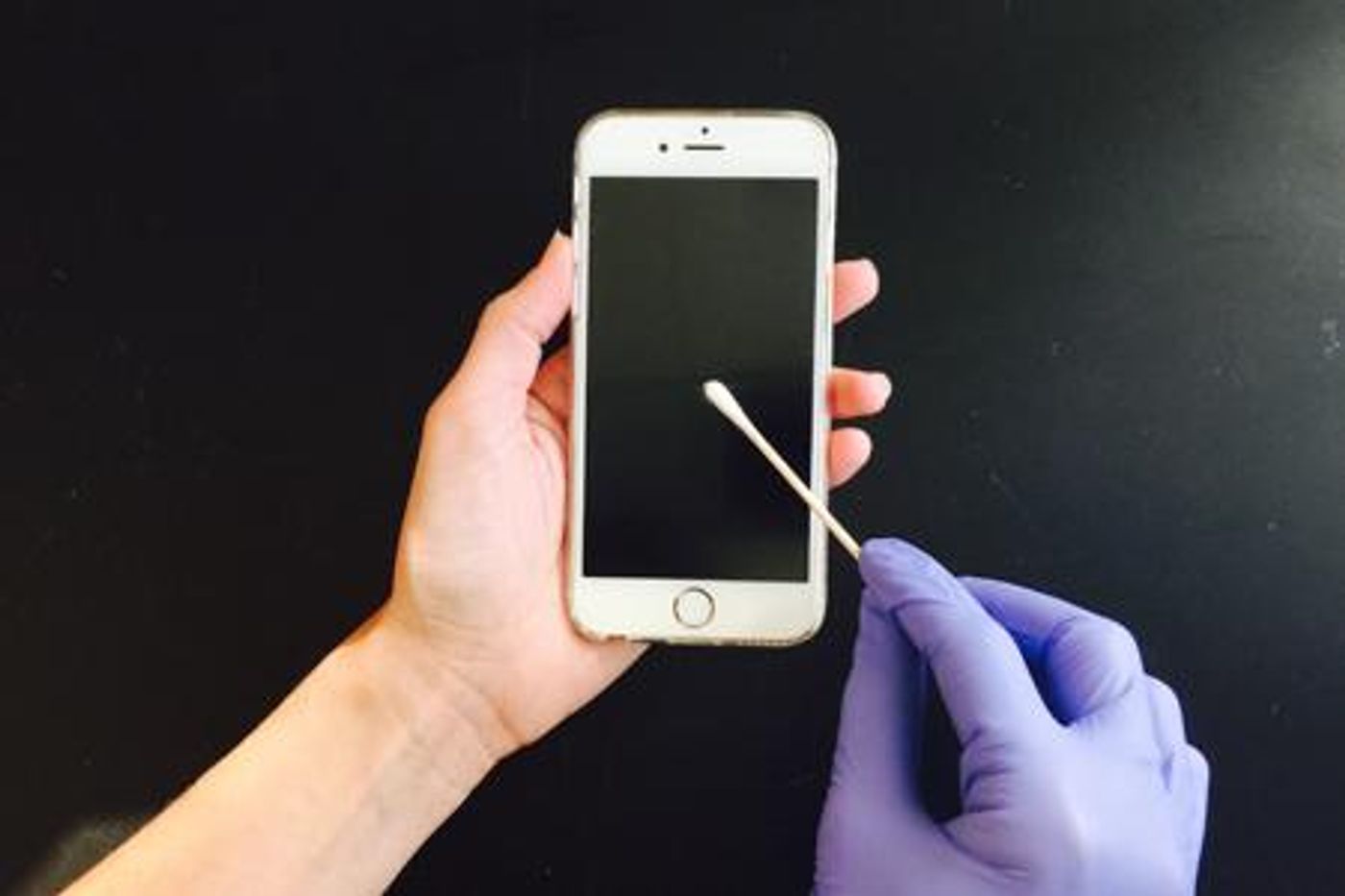A trace of us is left on everything we come into contact with, in the form of microbes and trace amounts of chemicals. Researchers at the University of California San Diego (UCSD) collected the molecules on cell phones and from that were able to build a profile of the cell phone owner for each that determined things like diet, health information, personal hygiene products, and places the person visited.
The report, published in Proceedings of the National Academy of Sciences, served as a proof-of-principle that could have future applications in security fields like airport screening and criminal profiling, heath applications such as prescription adherence checks and clinical trial monitoring, and environmental studies.
"You can imagine a scenario where a crime scene investigator comes across a personal object -- like a phone, pen or key -- without fingerprints or DNA, or with prints or DNA not found in the database. They would have nothing to go on to determine who that belongs to," commented senior author Pieter Dorrestein, a Professor in the UCSD School of Medicine and Skaggs School of Pharmacy and Pharmaceutical Sciences. "So we thought - what if we take advantage of left-behind skin chemistry to tell us what kind of lifestyle this person has?"
Dorrestein previously led
a study that used three-dimensional models to visualize the microbes and chemicals residing on hundreds of different places on two healthy volunteers’ bodies, illustrated in the video below. Although the participants had been restricted from using personal hygiene products for three days prior to the start of the collection of samples, it was determined that hygiene and beauty products still comprised the majority of the molecular features found by the researchers.
"All of these chemical traces on our bodies can transfer to objects," Dorrestein explained. "So we realized we could probably come up with a profile of a person's lifestyle based on chemistries we can detect on objects they frequently use."
In the new work, 39 healthy adults volunteered for the study, in which four places on the cell phones, and eight places on the hands of each person were swabbed. A common technique called mass spectrometry was utilized to assay the molecules present in each of the 500 samples that had been taken. By comparing their findings to reference structures, many molecules could then be identified. Those reference structures are contained in a mass spectrometry resource called the GNPS database, which was created by Dorrenstein and a co-author, Nuno Bandeira, an Associate Professor at the UCSD Jacobs School of Engineering and Skaggs School of Pharmacy and Pharmaceutical Sciences.
Some of the various chemicals collected from the cell phones might provide medical information; such chemicals included eye drops, anti-inflammatory and anti-fungal skin creams, hair loss treatments and anti-depressants. Other molecules provided insight into the diets of participants, such as herbs and spices, citrus and caffeine. Some chemicals like sunscreen ingredients and insect repellent were found even though it had been months since the participants had used them. That suggested to the researchers that this strategy could be used to create long-term lifestyle composites.
"By analyzing the molecules they've left behind on their phones, we could tell if a person is likely female, uses high-end cosmetics, dyes her hair, drinks coffee, prefers beer over wine, likes spicy food, is being treated for depression, wears sunscreen and bug spray -- and therefore likely spends a lot of time outdoors -- all kinds of things," said first author of the work Amina Bouslimani, PhD, an assistant project scientist in Dorrestein's lab. "This is the kind of information that could help an investigator narrow down the search for an object's owner."
Dorrenstein acknowledges that there are various limitations. For one, the sampled molecules are not an exact identifier like DNA, and only provide general information. Many more reference samples are needed to flesh out the database of common chemicals people are exposed to in daily life, like foods, materials used in clothing, carpeting and building materials, for example. No single lab will be expected, or would be able to build such a database to the scale of current fingerprint databases, but Dorrenstein hopes to see it created. He talks about his work in the video below, from the National Center for Complementary and Integrative Health.
Dorrestein and Bouslimani are currently extending their study with another 80 volunteers, sampling other personal objects like wallets and keys as well. They also plan to soon study the microbial traces in their samples. Another UCSD Professor and co-author, Rob Knight, contributed to a 2010 report that showed how a computer’s owner could be identified based on microbes left by the individual on the keyboard. There was some unreliability in the work, so it could not yet be used in forensics.
Outside of forensic investigations, Dorrestein and Bouslimani can imagine their work being applied to medical and environmental studies. For example, physicians could potentially one day assess whether a patient is following a medication plan by sampling the metabolites on the patient’s skin. Additionally, people involved in a clinical trial could be categorized based on how they metabolize the medication in the trial. Skin metabolites could then reveal which patients were properly metabolizing he drug, and the dosage to those who were not could be halted. Vital information about a person’s or community’s exposure to dangerous pollutants and environmental hazards, such as in a high-risk workplace or a neighborhood near a pollution source may also be reflected in the chemicals on a person’s skin.
Sources:
AAAS/Eurekalert! via
UCSD,
PNAS









